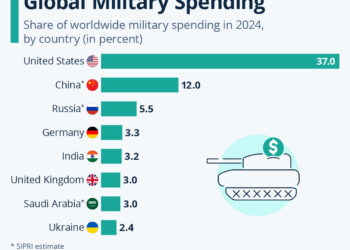The Explosive Rise of AI Tools in Everyday Life
The Surge in Popularity of Generative AI
The advent of generative AI has been nothing short of revolutionary, particularly after the public release of ChatGPT in late 2022. Since then, these AI tools have quickly become synonymous with cutting-edge technology, showcasing the impressive capabilities of artificial intelligence in ways that resonate with everyday consumers. As we delve into how these tools are integrated into daily routines, it’s crucial to explore both their usage and the perceptions surrounding them.
Understanding the Current Landscape of AI Utilization
Statistics on AI Engagement
Recent statistics reveal an intriguing picture of AI adoption among consumers. According to a Statista Consumer Insights study, approximately 30% of U.S. adults reported using AI chatbots like ChatGPT or Meta AI within the past year leading up to August 2024. This indicates a noteworthy level of interest and preliminary engagement with generative AI tools, especially in a landscape that promises rapid growth and innovation in AI technology.
Real vs. Perceived Integration of AI Tools in Daily Life
Everyday Applications of AI
While many individuals are experimenting with AI tools, the actual integration of these tools into daily life presents a more complex narrative. The same Statista survey highlighted that only 20% of Americans consider AI tools an integral part of their everyday routines. This statistic might seem modest; however, it highlights a crucial distinction between trying out new technologies and genuinely incorporating them into one’s lifestyle.
Regional Variations in AI Engagement
Interestingly, the survey results reveal significant regional variations in the adoption and integration of AI tools. For instance, countries like Brazil and India show considerably higher percentages—33% and 41%, respectively—of respondents reporting that AI tools are part of their daily lives. This disparity may stem from differing access to technology, cultural attitudes toward innovation, or even the specifics of local market conditions.
The Invisible Yet Pervasive Role of AI
AI in the Background
An essential factor often overlooked in conversations about AI adoption is how its presence is often unnoticed in daily applications. While explicit usage of AI chatbots might be low, many services and tools that people frequently interact with—think social media platforms, online shopping experiences, and navigation apps—are imbued with AI functionalities. In many cases, consumers might not perceive these encounters as direct interactions with AI, leading to an undervaluation of its role in their lives.
Examples of AI in Daily Services
Some common examples include personalized shopping recommendations on e-commerce websites, AI-driven customer service chatbots, and virtual assistants like Siri and Google Assistant. These tools work continually in the background, enhancing user experience without users explicitly recognizing their reliance on AI technology.
Addressing the Barriers to Wider AI Adoption
Awareness and Understanding
One of the primary barriers to widespread AI adoption is a lack of awareness and understanding about what these tools can offer. As generative AI continues to evolve, it is essential to improve consumers’ education on AI benefits, safety, and ethical considerations. Bridging this knowledge gap can lead to greater acceptance and usage in everyday life.
The Role of Trust in AI Adoption
Another factor plays a significant role in how people engage with AI technologies: trust. Consumers are often hesitant to use new technologies that they do not fully understand or that have not yet established a track record of reliability and safety. Building consumer trust and illustrating the tangible benefits of AI tools can facilitate deeper integration into daily routines.
The Future of AI in Everyday Life
While current statistics show that approximately 20% of Americans actively engage with AI tools in their day-to-day activities, the trend indicates that these figures are likely to grow. As generative AI continues to develop, and as more applications become viable and user-friendly, we can expect a clearer picture of how these tools will shape our futures, especially in everyday life. The journey from mere trial to meaningful application is one that holds exciting potential for both consumers and AI developers alike.






